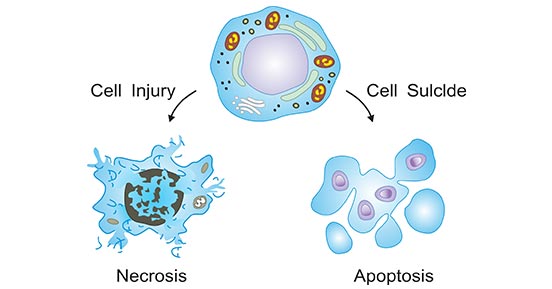A patient has a long history of smoking. He has blood studies done because he is very tired, short of breath, and does not feel well. His blood gases reveal the following findings: pH 7.3, HCO3- 25 mEq/L, PaCO2 48 mmHg. What is the interpretation of these gases?
Select all that apply:
Normal range:
- pH: 7.35-7.45
- PaCO2: 36-44 mmHg
- HCO3-: 22-26 mEq/L
Acidosis
With compensation (being compensated)
Respiratory
Alkalosis
Metabolic
Correct Answer : A,C
Choice A Reason:
Acidosis is indicated by a pH lower than the normal range of 7.35-7.45. In this case, the patient’s pH is 7.3, which confirms acidosis. Acidosis can be caused by either respiratory or metabolic factors, but the low pH alone confirms the presence of acidosis.
Choice B Reason:
Compensation refers to the body’s attempt to return the pH to normal by adjusting the levels of CO2 or HCO3-. In this case, the HCO3- level is within the normal range (22-26 mEq/L), indicating that there is no metabolic compensation occurring. Therefore, this choice is incorrect.
Choice C Reason:
Respiratory acidosis is indicated by an elevated PaCO2 level, which is higher than the normal range of 36-44 mmHg. The patient’s PaCO2 is 48 mmHg, suggesting that the acidosis is due to respiratory factors. This is consistent with the patient’s history of smoking and symptoms of respiratory distress.
Choice D Reason:
Alkalosis is indicated by a pH higher than the normal range of 7.35-7.45. Since the patient’s pH is 7.3, which is below the normal range, this indicates acidosis, not alkalosis. Therefore, this choice is incorrect.
Choice E Reason:
Metabolic acidosis is indicated by a low HCO3- level. In this case, the patient’s HCO3- level is within the normal range (25 mEq/L), indicating that the acidosis is not metabolic. Therefore, this choice is incorrect.
Nursing Test Bank
Naxlex Comprehensive Predictor Exams
Related Questions
Correct Answer is D
Explanation
Choice A: Atrophy
Atrophy refers to the reduction in size or wasting away of an organ or tissue due to a decrease in cell size or number. This can occur due to various reasons such as disuse, lack of nutrition, or loss of nerve supply. While atrophy involves the shrinkage of cells, it does not directly result in cellular death. Instead, it is a form of cellular adaptation to adverse conditions.
Choice B: Proliferation
Proliferation is the process by which cells grow and divide to produce more cells. This process is essential for growth, development, and tissue repair. Proliferation leads to an increase in the number of cells and is the opposite of cellular death. It is a tightly regulated process that ensures the maintenance and regeneration of tissues.
Choice C: Mutation
Mutation refers to changes in the DNA sequence of a cell. These changes can occur due to errors during DNA replication, exposure to radiation, or chemical mutagens. While mutations can lead to various outcomes, including cancer, they do not directly cause cellular death. Instead, mutations can alter the function of genes and proteins, potentially leading to uncontrolled cell growth or other cellular dysfunctions.
Choice D: Death
Apoptosis is a form of programmed cell death that occurs in multicellular organisms. It is a highly regulated process that allows the body to remove damaged or unnecessary cells without causing harm to surrounding tissues. Apoptosis involves a series of biochemical events leading to characteristic cell changes and eventual death. This process is crucial for maintaining cellular homeostasis and preventing the development of diseases such as cancer.

Correct Answer is B
Explanation
Choice A Reason:
Atrophy refers to the reduction in size or wasting away of an organ or tissue due to a decrease in cell size or number. It is not a type of cell death but rather a process of cell shrinkage and loss of function. Therefore, it does not directly relate to the damage caused to nearby cells.
Choice B Reason:
This is the correct answer. Apoptosis is a form of programmed cell death that occurs in a controlled and regulated manner. It allows for the removal of damaged or unnecessary cells without causing an inflammatory response or damage to surrounding tissues. During apoptosis, cellular components are neatly packaged into vesicles called apoptotic bodies, which are then phagocytosed by neighboring cells or immune cells, preventing the release of harmful substances.
Choice C Reason:
Necrosis is a form of traumatic cell death that results from acute cellular injury. It often leads to the uncontrolled release of cellular contents, causing inflammation and damage to surrounding tissues. This process can be detrimental to nearby cells and is generally considered more harmful than apoptosis.
Choice D Reason:
Lysis refers to the breaking down or destruction of cells, often due to external factors such as toxins, infections, or immune responses. Like necrosis, lysis can result in the release of cellular contents into the surrounding environment, leading to inflammation and damage to nearby cells.
Whether you are a student looking to ace your exams or a practicing nurse seeking to enhance your expertise , our nursing education contents will empower you with the confidence and competence to make a difference in the lives of patients and become a respected leader in the healthcare field.
Visit Naxlex, invest in your future and unlock endless possibilities with our unparalleled nursing education contents today
Report Wrong Answer on the Current Question
Do you disagree with the answer? If yes, what is your expected answer? Explain.
Kindly be descriptive with the issue you are facing.
